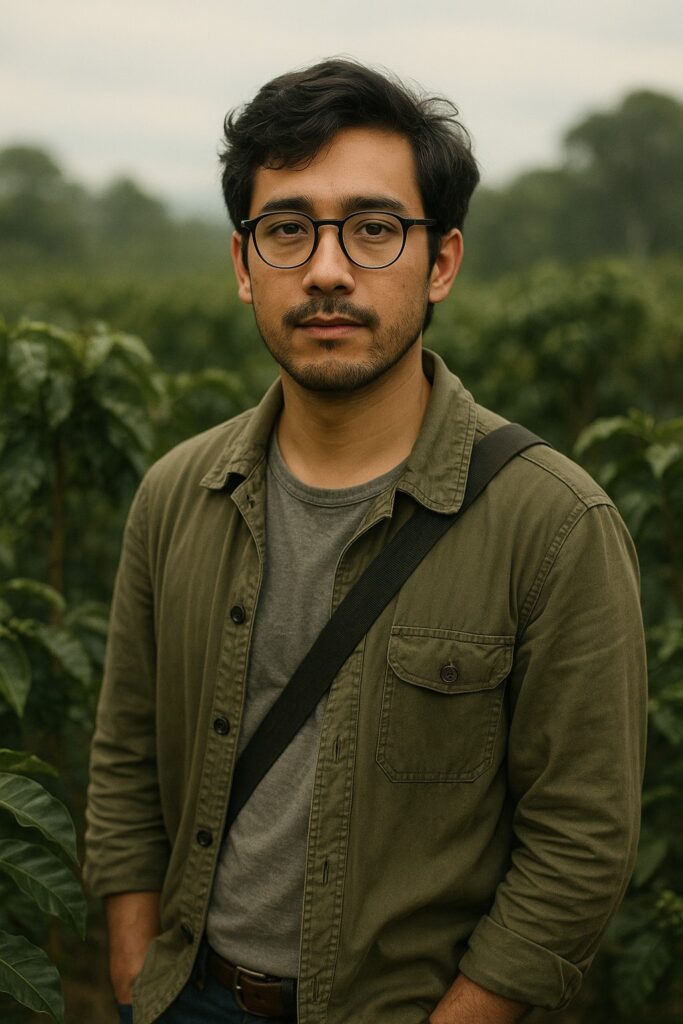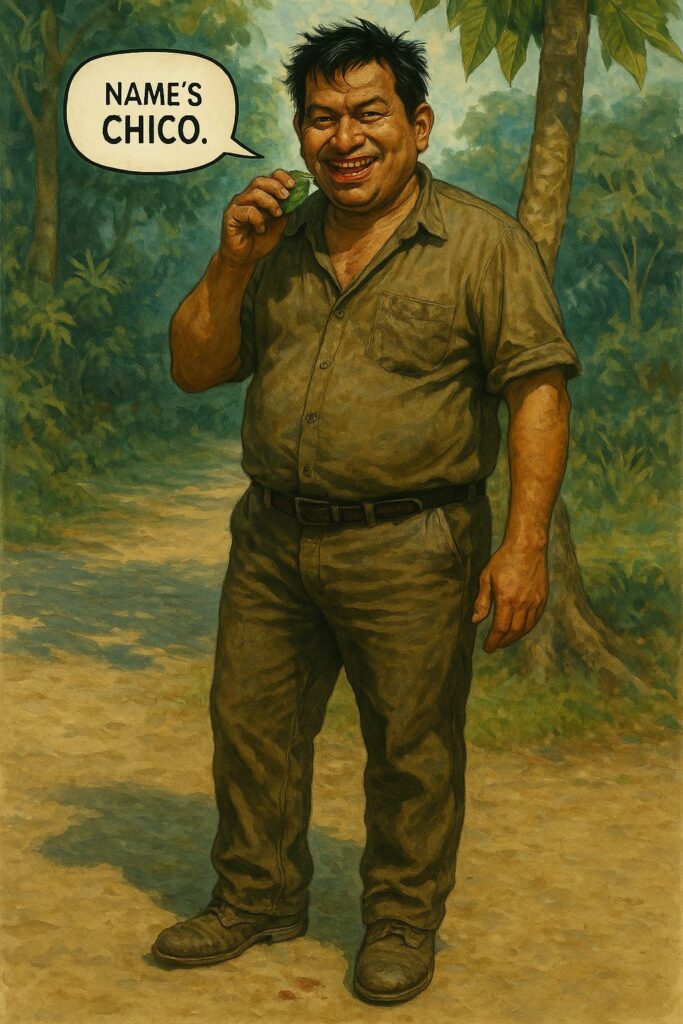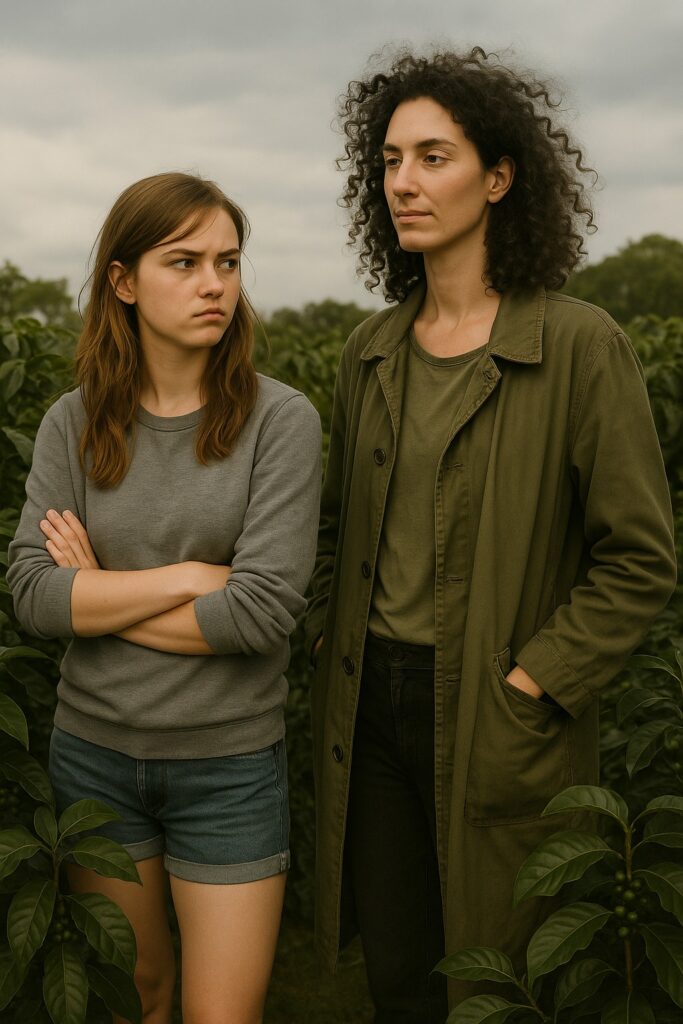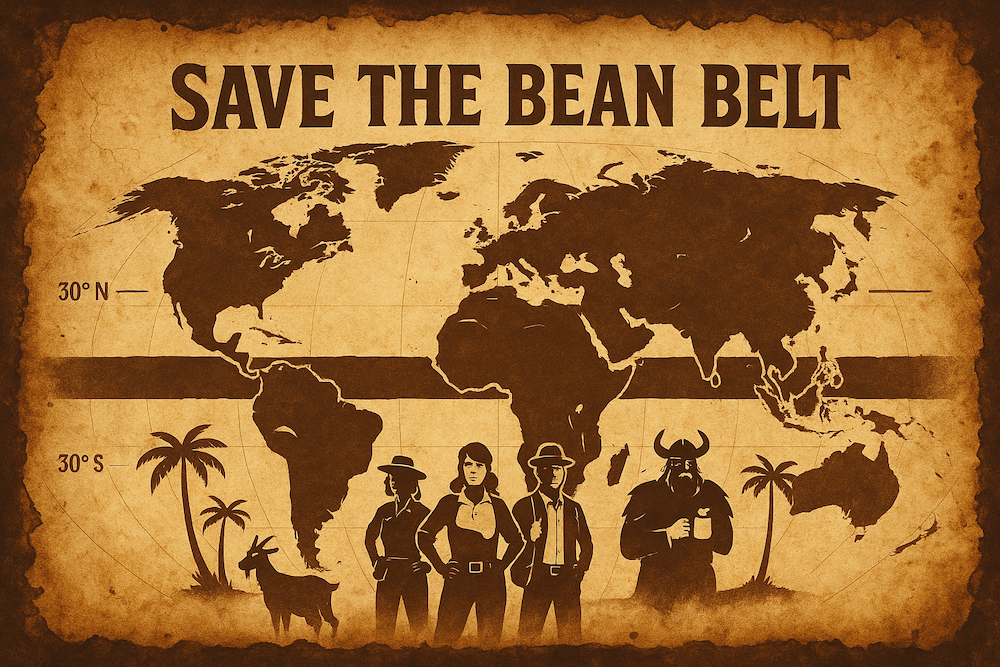Search Results for 'strong'
-
AuthorSearch Results
-
December 31, 2025 at 7:34 pm #8018
In reply to: The Hoards of Sanctorum AD26
It must be two hundred years at least since we’ve heard a will read at number 26, Cerenise thought to herself, still in a mild state of shock at the unexpected turn of events. She allowed her mind to wander, as she was wont to do.
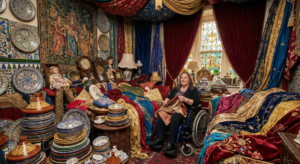 Cerenise had spent the best part of a week choosing a suitable outfit to wear for the occasion and the dressing room adjoining her bedroom had become even more difficult to navigate. Making sure her bedroom door was securely locked before hopping out of her wicker bath chair (she didn’t want the others to see how nimble she still was), she spent hours inching her way through the small gaps between wardrobes and storage boxes and old wooden coffers, pulling out garment after garment and taking them to the Napoleon III cheval mirror to try on. She touched the rosewood lovingly each time and sighed. It was a beautiful mirror that had faithfully reflected her image for over 150 years.
Cerenise had spent the best part of a week choosing a suitable outfit to wear for the occasion and the dressing room adjoining her bedroom had become even more difficult to navigate. Making sure her bedroom door was securely locked before hopping out of her wicker bath chair (she didn’t want the others to see how nimble she still was), she spent hours inching her way through the small gaps between wardrobes and storage boxes and old wooden coffers, pulling out garment after garment and taking them to the Napoleon III cheval mirror to try on. She touched the rosewood lovingly each time and sighed. It was a beautiful mirror that had faithfully reflected her image for over 150 years.Holding a voluminous black taffetta mourning dress under her chin, Cerenise scrutinised her appearance. She looked well in black, she always felt, and it was such a good background for exotic shawls and scarves. Pulling the waist of the dress closer, it became apparent that a whalebone corset would be required if she was to wear the dress, a dreadful blight on the fun of wearing Victorian dresses. She lowered the dress and peered at her face. Not bad for, what was it now? One thousand 6 hundred and 43 years old? At around 45 years old, Cerenise decided that her face was perfect, not too young and not too old and old enough to command a modicum of respect. Thenceforth she stopped visibly aging, although she had allowed her fair hair to go silver white.
It was just after the siege of Gloucester in 1643, which often seemed like just yesterday, when Cerenise stopped walking in public. Unlike anyone else, she had relished the opportunity to stay in one place, and not be sent on errands miles away having to walk all the way in all weathers. Decades, or was it centuries, it was hard to keep track, of being a saint of travellers had worn thin by then, and she didn’t care if she never travelled again. She had done her share, although she still bestowed blessings when asked.
It was when she gave up walking in public that the hoarding started. Despite the dwellings having far fewer things in general in those days, there had always been pebbles and feathers, people’s teeth when they fell out, which they often did, and dried herbs and so forth. As the centuries rolled on, there were more and more things to hoard, reaching an awe inspiring crescendo in the last 30 years.
Cerenise, however, had wisely chosen to stop aging her teeth at the age of 21.
Physically, she was in surprisingly good shape for an apparent invalid but she spent hours every day behind locked doors, clambering and climbing among her many treasures, stored in many rooms of the labyrinthine old building. There was always just enough room for the bath chair to enter the door in each of her many rooms, and a good strong lock on the door. As soon as the door was locked, Cerenise parked the bath chair in front of the door and spent the day lifting boxes and climbing over bags and cupboards, a part of herself time travelling to wherever the treasures took her.
Eventually Cerenise settled on a long and shapeless but thickly woven, and thus warm, Neolithic style garment of unknown provenance but likely to be an Arts and Crafts replica. It was going to be cold in the library, and she could dress it up with a colourful shawl.
December 31, 2025 at 11:11 am #8009In reply to: Finder’s Keepers of the Hoard
Some ideas for the background thread and character profiles for “The Hoards of Emporium 26.”
The Setting: Emporium 26
They live in Gloucester (ancient Glevum), a city built on Roman bones where the layout of the streets still follows the legions’ sandals. They inhabit a sprawling, shared Georgian townhouse complex that has been knocked through into one labyrinthine dwelling—Number 26.
To the outside world, it looks like a dilapidated heritage site. Inside, it is The Emporium: a geological stratification of history, where layers of Roman pottery are mixed with 1990s Beanie Babies and medieval reliquaries.
The Background Thread: “The Weight of Eternity”
Why do they hoard? Because when you live forever, “letting go” feels like losing a piece of the timeline. Hoarding objects is for them an accumulation of evidence of existence.
- The Curse: They cannot die naturally, but they can fade if they are forgotten. The “stuff” anchors them to the physical plane.
- The “Halo” Effect: Occasionally, when they are arguing over whose turn it is to do the dishes, or when they find a lost treasure, the stained-glass light of their old divinity flickers behind their heads—a neon halo of forgotten holiness.
The Hoarders & Their Stashes
1. Helier ( The Hermit / The Dreamer)
- Saintly Origin: Based on St. Helier (Jersey/Normandy). He was an ascetic hermit who lived in a cave and was eventually beheaded.
- Modern Persona: A soft-spoken agoraphobe who hasn’t left the house since the invention of the internet. He wears oversized cardigans that smell like old library books.
- The Mania: Escapism & Communication.
- Because he spent centuries in silence on a rock, he is now obsessed with human stories and noise.
- The Hoard: ” The Media Mountain.”
- His wing of the house is a fire hazard of pulp fiction, towering stacks of National Geographic (dating back to the first issue), thousands of VHS tapes (he has no VCR), and tangled knots of ethernet cables that he refuses to throw away “in case they fit a port from 1998.”
- The Secret Stash: Beneath a pile of “The Hoarder Vampires” novels lies his true relic: The Stone Pillow. The actual rock he slept on in the 6th century. He still naps on it when his back hurts.
2. Spirius (The Bishop / The Container)
- Saintly Origin: Evocative of St. Exuperius (Bayeux). A driver-out of demons and a man of grand gestures.
- Modern Persona: A nervous, fidgety man who is convinced the world is leaking. He is the “fixer” of the group but usually makes things worse with duct tape.
- The Mania: Containment & Preservation.
- In the old days, he bottled demons. Now, he’s terrified of running out of space to put things.
- The Hoard: “The Vessel Void.”
- Spirius hoards anything that can hold something else. Empty jam jars (washed, mostly), Tupperware with no matching lids, biscuit tins, and thousands of plastic carrier bags stuffed inside other carrier bags (the “Bag of Bags”).
- The Secret Stash: In a locked pantry, he keeps a shelf of sealed mason jars labeled with dates like “1431” or “1789.” He claims they contain the “Sigh of a King” or “The smell of rain before the Plague.” It’s actually just dust, but the jars vibrate slightly.
3. Cerenise (The Weaver / The Mender)
- Saintly Origin: Evocative of St. Ceneri or St. Cerneuf. A saint of travelers, or perhaps needlework.
- Modern Persona: She is the “Wheelchair Girl’s” friend mentioned in the intro? Or perhaps she is in a wheelchair now—not because she can’t walk, but because she’s too tired from walking for 1,500 years. She is sharp-tongued and fashionable in a “crazy bag lady” sort of way.
- The Mania: Potential & Texture.
- She sees the soul in broken things. She cannot throw away anything that “could be fixed.”
- The Hoard: “The Fabric of Time.”
- Her rooms are draped in layers of textiles: velvet curtains from a 1920s cinema, moth-eaten tapestries depicting her own miracles (she thinks the nose is wrong), and buttons. Millions of buttons. She also hoards broken appliances—toasters, lamps, clocks—insisting she will repair them “next Tuesday.”
- The Secret Stash: A mannequin dressed in a perfectly preserved Roman stola, hidden under forty layers of polyester coats. It’s the outfit she wore when she performed her first miracle. She tries it on every New Year’s Eve.
4. Yvoise (The Advocate / The Bureaucrat)
- Saintly Origin: Evocative of St. Yves (Patron of Lawyers/Brittany/Normandy). The arbiter of justice.
- Modern Persona: The “Manager” of Emporium 26. She wears power suits from the 80s and is always carrying a clipboard. She loves rules, even if she invents them.
- The Mania: Proof of Truth.
- She is terrified of being forgotten or cheated. She needs a receipt for everything.
- The Hoard: “The Archive of Nothing.”
- Yvoise hoards paper. Receipts from a coffee bought in 1952, bus tickets, expired warranties, junk mail, and legal disclaimers torn off mattresses. Her room looks like the inside of a shredder that exploded. She claims she is building “The Case for Humanity.”
- The Secret Stash: A filing cabinet labeled “Do Not Open.” Inside is not paper, but Seeds. Seeds from the trees of ancient Gaul. She is saving them for when the paper finally takes over the world and she needs to replant the forest she misses.
Starter: The Reading of Austreberthe’s Will
The story kicks off because Austreberthe (The Saint of Washing/Water) has died. Her hoard was Soap and Water.
- The house is now flooding because her magical containment on the plumbing has broken.
- The remaining four must navigate her “Tsunami Wing”—a treacherous dungeon of accumulated bath bombs, stolen hotel towels, and aggressive washing machines—to find her Will.
- The Will is rumored to reveal the location of the “Golden Key,” an object that can legally terminate their lease on Emporium 26, which none of them want, but all of them crave.
December 30, 2025 at 6:42 pm #8003In reply to: The Elusive Samuel Housley and Other Family Stories
JOHN BROOKS ALIAS PRIESTLAND
1766-1846John Brooks, my 5x great grandfather, was born in 1766, according to the 1841 census and the burial register in 1846 which stated his age at death as 80 years, but no baptism has been found thus far.
On his first son’s baptism in 1790 the parish register states “John son of John and Elizabeth Brooks Priestnal was baptised”. The name Priestnal was not mentioned in any further sibling baptism, and he was John Brooks on his marriage, on the 1841 census and on his burial in the Netherseal parish register. The name Priestnal was a mystery.
I wondered why there was a nine year gap between the first son John, and the further six siblings, and found that his first wife Elizabeth Wilson died in 1791, and in 1798 John married Elizabeth Cowper, a widow.
John was a farmer of Netherseal on both marriage licences, and of independent means on the 1841 census.
Without finding a baptism it was impossible to go further back, and I was curious to find another tree on the ancestry website with many specific dates but no sources attached, that had Thomas Brooks as his father and his mother as Mary Priestland. I couldn’t find a marriage for John and Mary Priestland, so I sent a message to the owner of the tree, and before receiving a reply, did a bit more searching.
I found an article in the newspaper archives dated 9 August 1839 about a dispute over a right of way, and John Brooks, 73 years of age and a witness for the complainant, said that he had lived in Netherseal all his life (and had always know that public right of way and so on).
I found three lists of documents held by the Derby Records Office about property deeds and transfers, naming a John Brooks alias Priestland, one in 1794, one in 1814, and one in 1824. One of them stated that his father was Thomas Brooks. I was beginning to wonder if Thomas Brooks and Mary Priestland had never married, and this proved to be the case.
The Australian owner of the other tree replied, and said that they had paid a researcher in England many years ago, and that she would look through a box of papers. She sent me a transcribed summary of the main ponts of Thomas Brooks 1784 will:
Thomas Brooks, husbandman of Netherseal
To daughter Ann husband of George Oakden, £20.
To grandson William Brooks, £20.
To son William Brooks and his wife Ann, one shilling each.
To his servant Mary Priestland, £20 and certain household effects and certain property.
To his natural son John Priestland alias Brooks, various properties and the residue of his estate.
John Priestland alias Brooks appointed sole executor.It would appear that Thomas Brooks left the bulk of his estate to his illegitimate son, and more to his servant Mary Priestland than to his legitimate children.
THOMAS BROOKS
1706-1784
Thomas Brooks, my 6x great grandfather, had three wives. He had four children with his first wife, Elizabeth, between 1732 and 1737. Elizabeth died in 1737. He then married Mary Bath, who died in 1763. Thomas had no children with Mary Bath. In 1765 Thomas married Mary Beck. In 1766 his son John Brooks alias Priestland was born to his servant Mary Priestland.
Thomas Brooks parents were John Brooks 1671-1741, and his wife Anne Speare 1674-1718, both of Netherseal, Leicestershire.
December 30, 2025 at 1:13 pm #8001In reply to: The Elusive Samuel Housley and Other Family Stories
John Brooks
The Father of Catherine Housley’s Mother, Elizabeth Brooks.I had not managed to find out anything about the Brooks family in previous searches. We knew that Elizabeth Brooks father was J Brooks, cooper, from her marriage record. A cooper is a man who makes barrels.
Elizabeth was born in 1819 in Sutton Coldfield, parents John and Mary Brooks. Elizabeth had three brothers, all baptised in Sutton Coldfield: Thomas 1815-1821, John 1816-1821, and William Brooks, 1822-1875. William was known to Samuel Housley, the husband of Elizabeth, which we know from the Housley Letters, sent from the family in Smalley to George, Samuel’s brother, in USA, from the 1850s to 1870s. More to follow on William Brooks.
Elizabeth married Samuel Housley in Wolverhampton in 1844. Elizabeth and Samuel had three daughters in Smalley before Elizabeth’s death from TB in 1849, the youngest, just 6 weeks old at the time, was my great great grandmother Catherine Housley.
Elizabeth’s mother Mary died in 1823, and it not known if Elizabeth, then four, and William, a year old, stayed at home with their father or went to stay with relatives. There were no census records during those years.
John Brooks married Mary Wagstaff in 1814 in Birmingham. A witness at their marriage was Elizabeth Brooks, and this was probably John’s sister.
On the 1841 census (which was the first census in England) John Brooks, cooper, was living on Dudley Road, Wolverhampton, with wife Sarah. I was unable to find a marriage for them before a marriage in 1845 between John Brooks and Sarah Hughes, so presumably they lived together as man and wife before they married.
Then came the lucky find with John Brooks place of birth: Netherseal, Leicestershire. The place of birth on the 1841 census wasn’t specified, thereafter it was. On the 1851 census John Brooks, cooper, and Sarah his wife were living at Queens Cross, Dudley, with a three year old granddaughter E Brooks. John was born in 1791 in Netherseal.
It was commonplace for people to move to the industrial midlands around this time, from the surrounding countryside. However if they died before the 1851 census stating place of birth, it’s usually impossible to find out where they came from, particularly if they had a common name.
John Brooks doesn’t appear on any further census. I found seven deaths registered in Dudley for a John Brooks between 1851 and 1861, so presumably he is one of them.NETHERSEAL
On 27 June 1790 appears in the Netherseal parish register “John Brooks the son of John and Elizabeth Brooks Priestnal was baptised.” The name Priestnal does not appear in the transcription, nor the Bishops Transcripts, nor on any other sibling baptism. The Priestnal mystery will be solved in the next chapter.
John Brooks senior married Elizabeth Wilson by marriage licence on 20 November 1788 in Gresley, a neighbouring town in Derbyshire (incidentally near to Swadlincote and the ancestral lines of the Warren family, which also has branches in Netherseal. The Brooks family is the Marshall side). John Brooks was a farmer.
I haven’t found a baptism yet for John Brooks senior, but his death in Netherseal in 1846 provided the age at death, eighty years old, which puts his birth at 1766. The 1841 census has his birth as 1766 as well.
In 1841 John Brooks was 75, and “independent”, meaning that he was living on his own means. The name Brooks was transcribed as Broster, making this difficult to find, but it is clearly Brooks if you look at the original.
His wife Elizabeth, born in 1762, is also on the census, as well as the Jackson family: Joseph Jackon born 1804, Elizabeth Jackson his wife born 1799, and children Joseph, born 1833, William 1834, Thomas 1835, Stephen 1836, and Mary born 1838.
John and Elizabeths daughter Elizabeth Brooks, born in 1799, married Joseph Jackson, the son of an “opulent farmer” (newspaper archives) of Tatenhill, Staffordshire. They married on the 19th January 1832 in Burton on Trent. (Elizabeth Brooks was probably the witness on John Brooks junior’s marriage to Mary Wagstaff in Birmingham in 1814, although it could have been his mother, also Elizabeth Brooks.)
(Elizabeth Jackson nee Brooks was the aunt of Elizabeth in the portrait)
Joseph Jackson was declared bankrupt in 1833 (newspapers) and in 1834 a noticed in the newspapers “to the creditors of Joseph Jackson junior”, a victualler and farmer late of Netherseal, “following no business, who was lately dischared from his Majesty’s Gaol at Stafford” whose real estate was to be sold by auction. I haven’t yet found what he was in prison for.
In 1841 Joseph appeared again in the newspapers, in which he publicly stated that he had accused Thomas Webb, surgeon of Barton Under Needwood, of owing him money “just to annoy him” and “with a view to extort money from him”. and that he undertakes to pay Thomas Webb or his attorney, the costs within 14 days.
Joseph and Elizabeth had twins in 1841, born in Netherseal, John and Ruth. Elizabeth died in 1850.
Thereafter, Joseph was a labourer at the iron works in Wednesbury, and many generations of Jacksons continued working in the iron industry in Wednesbury ~ all orignially descended from farmers in Netherseal and Tatenhill.July 16, 2025 at 6:06 am #7969In reply to: The Elusive Samuel Housley and Other Family Stories
Gatacre Hall and The Old Book
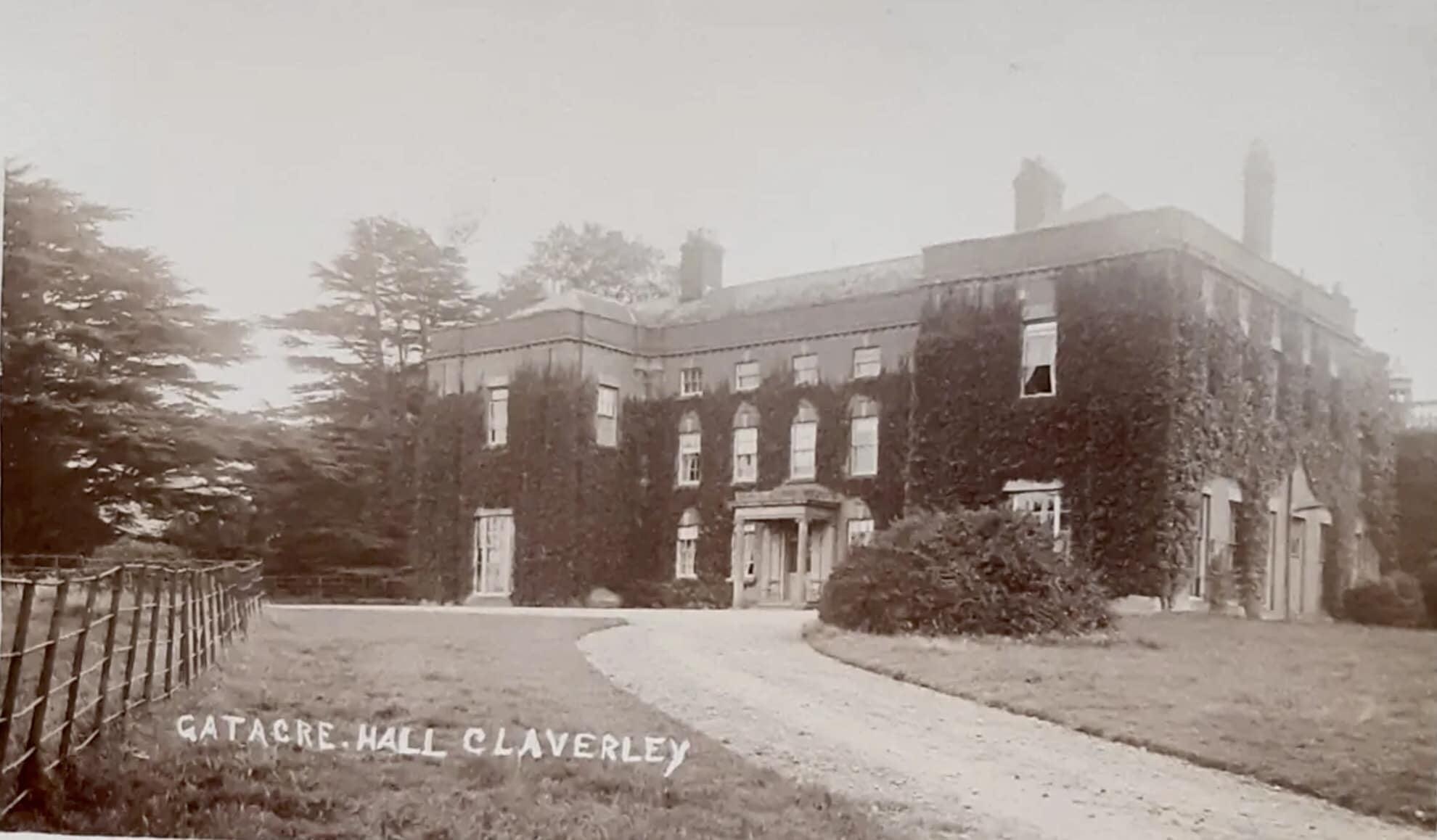
In the early 1950s my uncle John and his friend, possibly John Clare, ventured into an abandoned old house while out walking in Shropshire. He (or his friend) saved an old book from the vandalised dereliction and took it home. Somehow my mother ended up with the book.

I remember that we had the book when we were living in USA, and that my mother said that John didn’t want the book in his house. He had said the abandoned hall had been spooky. The book was heavy and thick with a hard cover. I recall it was a “magazine” which seemed odd to me at the time; a compendium of information. I seem to recall the date 1553, but also recall that it was during the reign of Henry VIII. No doubt one of those recollections is wrong, probably the date. It was written in English, and had illustrations, presumably woodcuts.
I found out a few years ago that my mother had sold the book some years before. Had I known she was going to sell it, I’d have first asked her not to, and then at least made a note of the name of it, and taken photographs of it. It seems that she sold the book in Connecticut, USA, probably in the 1980’s.
My cousin and I were talking about the book and the story. We decided to try and find out which abandoned house it was although we didn’t have much to go on: it was in Shropshire, it was in a state of abandoned dereliction in the early 50s, and it contained antiquarian books.
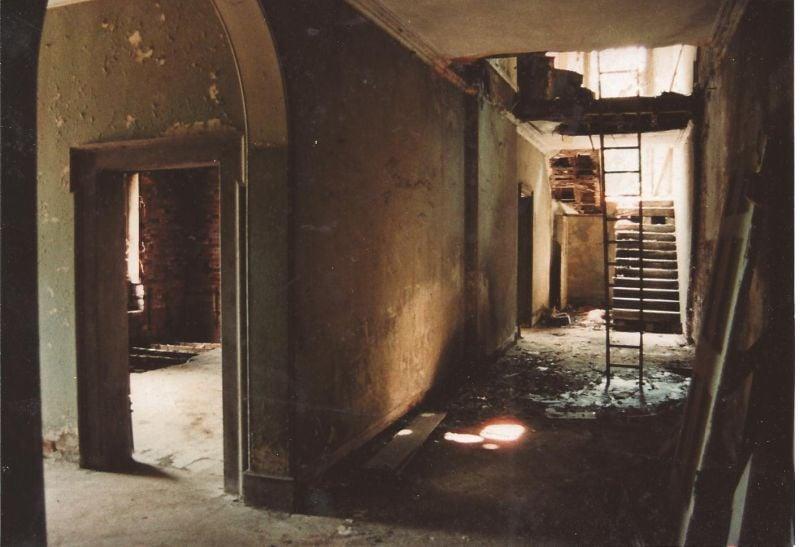
I posted the story on a Shropshire History and Nostalgia facebook group, and almost immediately had a reply from someone whose husband remembered such a place with ancient books and manuscripts all over the floor, and the place was called Gatacre Hall in Claverley, near Bridgnorth. She also said that there was a story that the family had fled to Canada just after WWII, even leaving the dishes on the table.
The Gatacre family sailing to Canada in 1947:
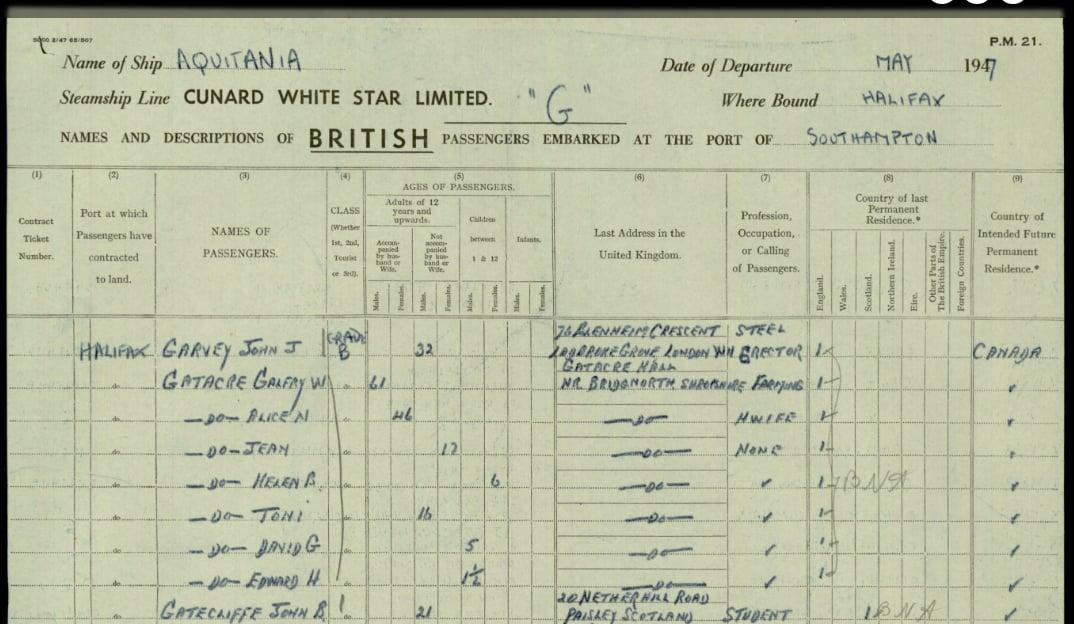
When my cousin heard the name Gatacre Hall she remembered that was the name of the place where her father had found the book.
I looked into Gatacre Hall online, in the newspaper archives, the usual genealogy sites and google books searches and so on. The estate had been going downhill with debts for some years. The old squire died in 1911, and his eldest son died in 1916 at the Somme. Another son, Galfrey Gatacre, was already farming in BC, Canada. He was unable to sell Gatacre Hall because of an entail, so he closed the house up. Between 1945-1947 some important pieces of furniture were auctioned, and the rest appears to have been left in the empty house.
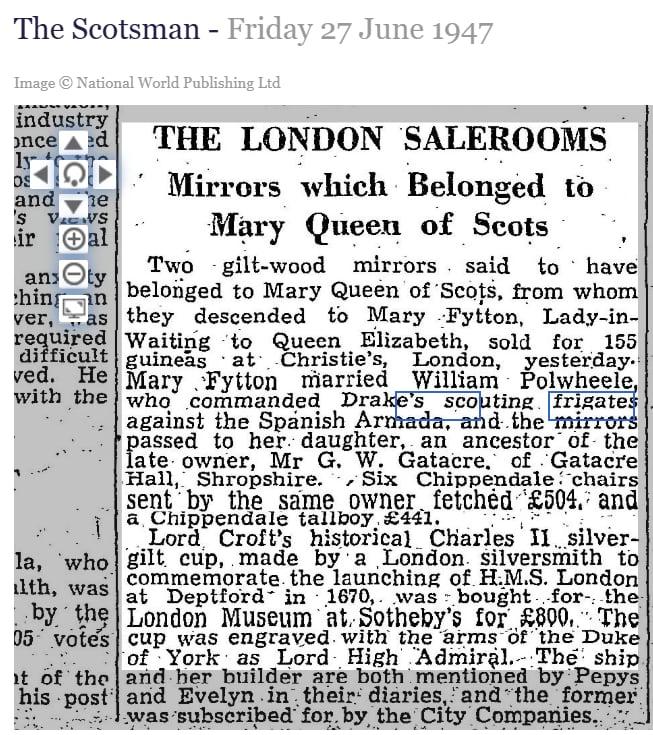
The family didn’t suddenly flee to Canada leaving the dishes on the table, although it was true that the family were living in Canada.
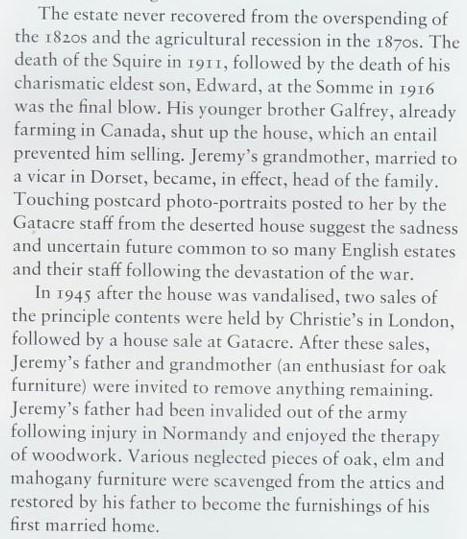
An interesting thing to note here is that not long after this book was found, my parents moved to BC Canada (where I was born), and a year later my uncle moved to Toronto (where he met his wife).
Captain Gatacre in 1918:

The Gatacre library was mentioned in the auction notes of a particular antiquarian book:
“Provenance: Contemporary ownership inscription and textual annotations of Thomas Gatacre (1533-1593). A younger son of William Gatacre of Gatacre Hall in Shropshire, he studied at the English college at the University of Leuven, where he rejected his Catholic roots and embraced evangelical Protestantism. He studied for eleven years at Oxford, and four years at Magdalene, Cambridge. In 1568 he was ordained deacon and priest by Bishop of London Edmund Grindal, and became domestic chaplain to Robert Dudley, 1st Earl of Leicester and was later collated to the rectory of St Edmund’s, Lombard Street. His scholarly annotations here reference other classical authors including Plato and Plutarch. His extensive library was mentioned in his will.”


There are thirty four pages in this 1662 book about Thomas Gatacre d 1654:
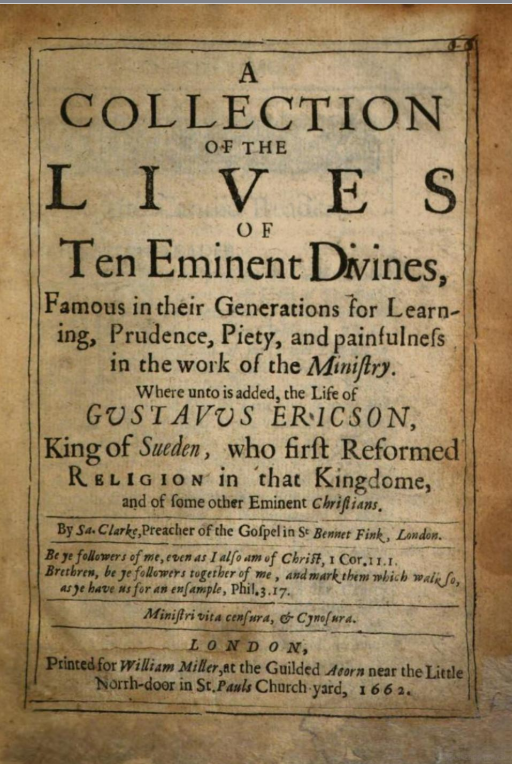
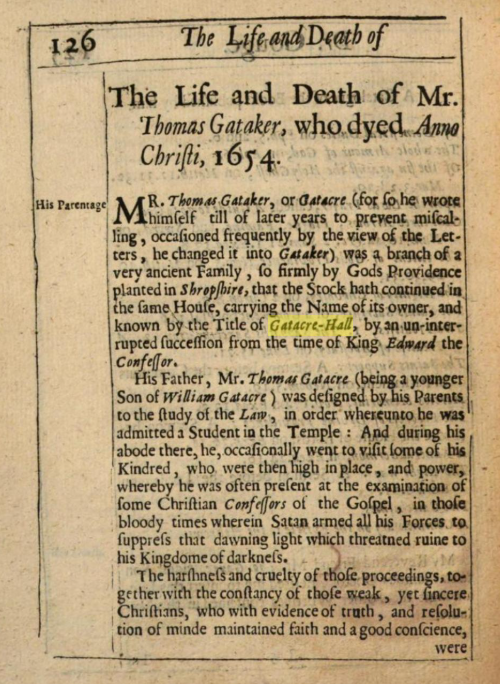 June 11, 2025 at 9:14 am #7958
June 11, 2025 at 9:14 am #7958In reply to: Cofficionados Bandits (vs Lucid Dreamers)
Chico poured grenadine into an ornate art nouveau glass filled with ginger ale. He hesitated, eying the tin of chicory powder. After a moment of deliberation, he sprinkled a dash into the mix, then added the maraschino cherry.
“I’m not sure Ivar the Boneless, chief of the Draugaskald, will appreciate that twist on his Shirley Temple,” said Godrick. “He may be called Boneless, but he’s got an iron grip and a terrible temper when he’s parched.”
Chico almost dropped the glass. Muttering a quick prayer to the virgin cocktail goddess, he steadied his hand. Amy wouldn’t have appreciated him breaking her freshly conjured aunt Agatha Twothface’s crystal glasses service.
“I don’t know what you mean,” said Chico a tad too quickly. “Do I know you?”
“I’m usually the one making the drinks,” said Godrick. “I served you your first americano when you popped into existence. Chico, right?”
“Oh! Yes. Right. You’re the bartender,” Chico said. He fidgeted. Small talks had always made him feel like a badly tuned Quena flute.
“I am,” said Godrick with a wink. “And if you want a tip? Boneless may forgive you the chicory if you make his cocktail dirty.”
Chico pause, considered, then reached down, grabbed a pinch of dust from the gazebo floor, and sprinkled it on the Temple, like cocoa on a cappuccino foam. He’d worked at Stardust for years before appearing here, after all. When he looked up, Godrick was chuckling.
“Ok!” Godrick said. “Now, add some vodka. I think I’ll take it to Ivar myself.”
“Oh! Right.” Chico nodded, grabbed the vodka bottle and poured in a modest shot and placed it back on the table.
Godrick titled his head. “Looks like your poney wants a sip too.”
For a moment, Chico blinked in confusion at the black stuffed poney standing nearby. Then freshly baked memories flooded in.
Right, the poney’s name was Tyrone.
It had been a broken toy that someone had tossed in the street. Amy had insisted Chico take it home. “It needs saving,” she said. “And you need the company.”
At first, Chico didn’t know what to do with it. He ended up replacing some of the missing stuffing with dried chicory leaves.
The next morning, Tyrone was born and trotting around the apartment. All he ever wanted was strong alcohol.
Chico had a strange thought, scrolling across the teleprompter in his mind.
Is that how character building works?
June 6, 2025 at 6:02 pm #7954In reply to: Cofficionados Bandits (vs Lucid Dreamers)
Another one! A random distant memory wafted into Amy’s mind. Uncle Jack always used to say GATZ e bo. Amy could picture his smile when he said it, and how his wife always smiled back at him and chuckled. Amy wondered if she’d even known the story behind that or if it had always been a private joke between them.
“What’s been going on with my gazebo?” Amy’s father rushed into the scene. So that’s what he looks like. Amy couldn’t take her eyes off him, until Carob elbowed her in the neck.
“Sorry, I meant to elbow you in the ribs, but I’m so tall,” Carob said pointlessly, in an attempt to stop Amy staring at her father as if she’d never seen him before.
Thiram started to explain the situation with the gazebo to Amy’s father, after first introducing him to Kit, the new arrival. “Humphrey, meet Kit, our new LBGYEQCXOJMFKHHVZ story character. Kit, this is Amy’s father who we sometimes refer to as The Padre.”
“Pleased to meet you, ” Kit said politely, quaking a little at the stern glare from the old man. What on earth is he wearing? A tweed suit and a deerstalker, in this heat! How do I know that’s what they’re called? Kit wondered, quaking a little more at the strangeness of it all.
“Never mind all that now!” Humphrey interrupted Thiram’s explanation.
Still as rude as ever! Amy thought.
“I’ve too much to think about, but I’ll tell you this: I’ve planned a character building meeting in the gazebo, and you are all invited. As a matter of fact,” Humphrey continued, “You are all obliged to attend. If you choose not to ~ well, you know what happened last time!”
“What happened last time?” asked Carob, leaning forward in anticipation of an elucidating response, but Humphrey merely glared at her.
Amy sniggered, and Humphrey shot her a lopsided smile. “YOU know what happened in Jack’s GATZ e bo, don’t you, my girl?”
Where were those random memories when you wanted them? Amy had no idea what he was talking about.
“Who else is invited, Humph? asked Chico, resisting the urge to spit.
“My good man,” Humphrey said with a withering look. “Sir Humphrey’s the name to you.”
Sir? what’s he on about now? wondered Amy. Does that make me a Lady?
“Who else is invited, Padre?” Amy echoed.
Humphrey pulled a scroll tied with a purple ribbon out of his waistcoat pocket and unfurled it. Clearing his throat importantly, he read the list to all assembled.
Juan and Dolores Valdez.
Godric, the Swedish barman
Malathion and Glyphosate, Thiram’s triplet brothers. Mal and Glyph for short.
Liz Tattler
Miss Bossy Pants
Goat Horned Draugaskald“Did I forget anyone?” Humphrey asked, peering over his spectacles as he looked at each of the characters. “You lot,” he said, “Amy, Carob, Thiram, Chico, Kit and Ricardo: you will be expected to play hosts, so you might want to start thinking about refreshments. And not,” he said with a strong authoritarian air, “Not just coffee! A good range of beverages. And snacks.”
Thiram, leaning against a tree, started whistling the theme tune to Gone With The Wind. Tossing an irritated glance in his direction, Carob roughly gathered up her mass of frizzy curls and tethered it all in a tight pony tail. I still don’t know what happened before, she fumed silently. The latest developments where making her nervous. Would they find out her secret?
“You guys,” called Chico, who had wandered over to the gazebo. “It’s full of ants.”
May 18, 2025 at 5:50 pm #7949In reply to: Cofficionados Bandits (vs Lucid Dreamers)
One too many cups of coffee and I should know better by now, Amy realised after tossing and turning in her crumpled bed through the strange dark hours of the night, wondering if someone had spiked her wine with cocaine or if she was having a heart attack or a nervous breakdown. They all say to just breathe, she thought, But that is the last thing you should focus on when you’re hyperventilating. You should forget your breathing entirely when you can’t control it. After several hours of imagining herself in the death throes of some dire terminal physical malfunction, she fell asleep, only to be woken up by a strong need to piss like a racehorse. Don’t open your eyes more than you need to, don’t wake up too much, she told herself as she lurched blindly to the privy.
Latte! Fucking Latte! what a stupid word for coffee with milk. Amy hated the word latte, it was so pretentious and stupid. Revolting anyway, putting milk in coffee, made inexpressibly worse by calling the bloody thing JUST MILK in another language. Why not call it Milch or Leche or молоко or γάλα or 牛奶 or sữa or दूध….
Amy flushed the toilet, wide awake and irritated, but never the less grateful for the realisation that her discomfort was nothing more than an ooverdoose of cafoone.
May 17, 2025 at 11:47 pm #7946In reply to: Liz Tattler – A Lifetime of Stories, in videos
Enter Liz’s Tipsy Waltz
[Verse]
Feathered quill meets parchment skin
Elizabeth writes where scandals begin
Pink champagne spills on the floor
Cougar’s grin says she’s ready for more[Verse 2]
Famed author weaves sly tales with fire
Slutty thoughts fuel Roberto’s desire
Finnley
The ghost
Hides in the night
Typewriter clicks
Dim candlelight[Chorus]
Ink and lust flow through this tale
Secrets whispered on parchment pale
Godfrey nuts
Edits the scene
In this wild world
What’s it all mean?[Verse 3]
In the cabinet where whispers creak
Roberto shows a sly technique
Finnley sighs
Unseen but clear
Through the shadows
His words appear[Bridge]
Elizabeth leads with a champagne toast
A cougar’s smirk
The fading ghost
Peanuts scatter
Chaos remains
A writer’s world drips ink and stains[Verse 4]
Pages flutter
They dance
They shout
Godfrey snickers
Edits play out
Roberto winks with knowing grace
In this madhouse
Who sets the pace?May 17, 2025 at 11:41 pm #7945Welcome to the Flying Fish Inn
[Verse]
Dusty inn of stories wide
Gum-leaf whispers where dreams abide
Mater’s laugh like the crackling fire
Dodo’s show lifts the spirits higher[Chorus]
Out on the edge where memories spin
Bushland beats and legends begin
With clove and Corrie’s mischievous grin
Here lies the heart of a dusty inn[Verse 2]
Prune plays tricks by lantern’s gleam
Kookaburras join this timeless theme
Aunt Idle’s wink it holds a spark
Lighting tales in the outback dark[Bridge]
Rusted signs swing slow with pride
Creaking porch where secrets hide
Every soul has a verse within
And every night’s a new tale to spin[Chorus]
Out on the edge where memories spin
Bushland beats and legends begin
With clove and Corrie’s mischievous grin
Here lies the heart of a dusty inn[Verse 3]
Old Bert hums with a pipe in hand
Echoes surf on the scorched red land
Shadows dance on the pub’s embrace
Laugh lines drawn on every faceMay 16, 2025 at 3:20 am #7935In reply to: Cofficionados Bandits (vs Lucid Dreamers)
“I don’t know, Amy. I thought it was Chico who was mysterious — subversively spitting at every opportunity.”
“Well, Carob, maybe we could just agree they’re equally mysterious?” suggested Amy, turning her attention back to her search.
Carob shrugged. “A woman in Greece is divorcing her husband because AI read her coffee cup and said he was cheating.”
Amy paused and looked up. “For real?”
“Yeah. I read it on Thiram’s news stream. He left it running on that weird device of his — over there, next to his half-drunk coffee. Not sure where he went, actually.”
Amy gasped and clapped her hands. “Oh! Oh! Brainwave occurring — let’s get AI to read Thiram’s coffee cup!”
Carob snorted. “Genius.”
They raced over to the small folding table where Thiram’s cup sat. Carob held up her phone.
“Okay. One quick pic. Hold it steady!”
They excitedly uploaded the image to an AI analysis app Thiram had installed on his device.
The app whirred for a few minutes:
DEEP COFFEE CUP ANALYSIS COMPLETE
Latent emotional residue: contemplative, fond of secrets.
Foam pattern suggests hidden loyalty to an entity known only as “The Port.”
Swirling suggests alignment with larger forces not currently visible.
Presence of cardamom notes: entirely unaccounted for.
Recommendation: approach carefully with gentle questioning.“Blimey, what does that mean?” asked Carob.
Amy nodded solemnly, perhaps with just a touch of smugness. “He is a man of mystery. Didn’t I say it?”
May 10, 2025 at 9:22 am #7929In reply to: Cofficionados – What’s Brewing
Godric
⚫ Godric
What We Know Visually:
-
Identified as Swedish, possibly tall and pale by stereotype.
-
A barista-channeler, so likely has the look of a mystical hipster.
Inferred Presence/Style:
-
May wear layered scarves, bracelets with charms, or ceremonial aprons.
-
The term Draugaskalds connects him to Norse aesthetics—he might carry old symbols or tattoos.
Unclear:
-
Concrete outfit, facial expression, or posture.
-
Age and physical habits.
May 10, 2025 at 9:06 am #7927In reply to: Cofficionados – What’s Brewing
Thiram Izu
Thiram Izu – The Bookish Tinkerer with Tired Eyes
Explicit Description
-
Age: Mid-30s
-
Heritage: Half-Japanese, half-Colombian
-
Face: Calm but slightly worn—reflecting quiet resilience and perceptiveness.
-
Hair: Short, tousled dark hair
-
Eyes: Observant, introspective; wears round black-framed glasses
-
Clothing (standard look):
-
Olive-green utilitarian overshirt or field jacket
-
Neutral-toned T-shirt beneath
-
Crossbody strap (for a toolkit or device bag)
-
Simple belt, jeans—functional, not stylish
-
-
Technology: Regularly uses a homemade device, possibly a patchwork blend of analog and AI circuitry.
-
Name Association: Jokes about being named after a fungicide (Thiram), referencing “brothers” Malathion and Glyphosate.
Inferred Personality & Manner
-
Temperament: Steady but simmering—he tries to be the voice of reason, but often ends up exasperated or ignored.
-
Mindset: Driven by a need for internal logic and external systems—he’s a fixer, not a dreamer (yet paradoxically surrounded by dreamers).
-
Social Role: The least performative of the group. He’s neither aloof nor flamboyant, but remains essential—a grounded presence.
-
Habits:
-
Zones out under stress or when overstimulated by dream-logic.
-
Blinks repeatedly to test for lucid dream states.
-
Carries small parts or tools in pockets—likely fidgets with springs or wires during conversations.
-
-
Dialogue Style: Deadpan, dry, occasionally mutters tech references or sarcastic analogies.
-
Emotional Core: Possibly a romantic or idealist in denial—hidden under his annoyance and muttered diagnostics.
Function in the Group
-
Navigator of Reality – He’s the one most likely to point out when the laws of physics are breaking… and then sigh and fix it.
-
Connector of Worlds – Bridges raw tech with dream-invasion mechanisms, perhaps more than he realizes.
-
Moral Compass (reluctantly) – Might object to sabotage-for-sabotage’s-sake; he values intent.
May 10, 2025 at 9:02 am #7925In reply to: Cofficionados – What’s Brewing
Chico Ray
Chico Ray
Directly Stated Visual and Behavioral Details:
-
Introduces himself casually: “Name’s Chico,” with no clear past, suggesting a self-aware or recently-written character.
-
Chews betel leaves, staining his teeth red, which gives him a slightly unsettling or feral appearance.
-
Spits on the floor, even in a freshly cleaned café—suggesting poor manners, or possibly defiance.
-
Appears from behind a trumpet tree, implying he lurks or emerges unpredictably.
-
Fabricates plausible-sounding geo-political nonsense (e.g., the coffee restrictions in Rwanda), then second-guesses whether it was fiction or memory.
Inferred Traits:
-
A sharp smile made more vivid by betel staining.
-
Likely wears earth-toned clothes, possibly tropical—evoking Southeast Asian or Central American flavors.
-
Comes off as a blend of rogue mystic and unreliable narrator, leaning toward surreal trickster.
-
Psychological ambiguity—he doubts his own origins, possibly a hallucination, dream being, or quantum hitchhiker.
What Remains Unclear:
-
Precise age or background.
-
His affiliations or loyalties—he doesn’t seem clearly aligned with the Bandits or Lucid Dreamers, but hovers provocatively at the edges.
May 10, 2025 at 8:51 am #7923In reply to: Cofficionados – What’s Brewing
Amy & Carob
☕ Amy Kawanhouse
Directly Stated Visual Traits:
-
Hair: Long, light brown
-
Eyes: Hazel, often sweaty or affected by heat/rain
-
Clothing: Old grey sweatshirt with pushed-up sleeves
-
Body: Short and thin, with shapely legs in denim
-
Style impression: Understated and practical, slightly tomboyish, no-frills but with a hint of self-aware physicality
Inferred From Behavior:
-
Functional but stylish in a low-maintenance way.
-
Comfortable with being dirty or goat-adjacent.
-
Probably ties her hair back when annoyed.
☕ Carob Latte
Directly Stated Visual Traits:
-
Height: Tall (Amy refers to her as “looming”)
-
Hair: Frizzled—possibly curly or electrified, chaotic in texture
-
General Look: Disheveled but composed; possibly wears layered or unusual clothing (fitting her dreamy reversal quirks)
Inferred From Behavior:
-
Movements are languid or deliberately unhurried.
-
Likely wears things with big pockets or flowing elements—goat-compatible.
-
There’s an aesthetic at play: eccentric wilderness mystic or mad cartographer.
May 10, 2025 at 7:56 am #7921In reply to: Cofficionados – What’s Brewing
Key Themes and Narrative Elements
Metafiction & Self-Reference: Characters frequently comment on their own construction, roles, and how being written (or observed) defines their reality. Amy especially embodies this.
Lucid Dreaming & Dream Logic: The boundary between reality and dream is porous. Lucid Dreamers are parachuting onto plantations, and Carob dreams in reverse. Lucid Dreamers are adverse to Coffee Plantations as they keep the World awake.
Coffee as Sacred Commodity: The coffee plantation is central to the story’s stakes. It’s under threat from climate (rain), AI malfunctions, and rogue dreamers. This plays comically on global commodity anxiety.
Technology Satire & AI Sentience: Emotional AI, “Silly Intelligence” devices, and exasperation with modern tech hint at mild technophobia or skepticism. All fueled by hot caffeinated piece of news.
Fictionality vs. Reality: Juan and Dolores embody this—grappling with what it means to be real. Dolores vanishes when no one looks—existence contingent on observation.
Rain & Weather as Mood Symbol: The rain is persistent—setting a tone of gentle absurdity and tension, while also providing plot catalyst.
May 10, 2025 at 7:51 am #7920In reply to: Cofficionados – What’s Brewing
Key Characters (with brief descriptions)
Amy Kawanhouse – Self-aware new character with metatextual commentary. Witty, possibly insecure, reflective; has a goat named Fanella and possibly another, Finnley, for emergencies. Often the first to point out logical inconsistencies or existential quirks.
Carob Latte – Tall, dry-humored, and slightly chaotic. Fond of coffee-related wordplay and appears to enjoy needling Amy. Described as having “frizzled” hair and reverse-lucid dreams.
Thiram Izu – The practical one, technologically inclined but confused by dreams. Tends to get frustrated with the group’s lack of coordination. Has a history of tension with Amy, and a tendency to “zone out.”
Chico Ray – Mysterious newcomer. May have appeared out of nowhere. Unclear loyalties. Possibly former friend or frenemy of the group, annoyed by past incidents.
Juan & Dolores Valdez – Fictional coffee icons reluctantly acknowledging their existence within a meta-reality. Dolores isn’t ready to be real, and Juan’s fine with playing the part when needed.
Godric – Swedish barista-channeler. Hints at deeper magical realism; references Draugaskalds (ghost-singers) and senses strange presences.
Ricardo – Appears later. Described in detail by Amy (linen suit, Panama hat), acts as a foil in a discussion about maps and coffee geography. Undercover for a mission with Miss Bossy.
The Padre – Could be a father or a Father. Offstage, but influential. Concerned about rain ruining crops. A source of exposition and concern.
Fanella – Amy’s cream goat, serves as comic relief and visual anchor.
Finnley, the unpredictable goat, is reserved for “life or death situations.”April 19, 2025 at 9:29 pm #7886In reply to: Cofficionados Bandits (vs Lucid Dreamers)
March 22, 2025 at 10:00 am #7874In reply to: The Last Cruise of Helix 25
A Quick Vacay on Mars
“The Helix is coming in for descent,” announced Luca Stroud, a bit too solemnly. “And by descent, I mean we’re parking in orbit and letting the cargo shuttles do the sweaty work.”
From the main viewport, Mars sprawled below in all its dusty, rust-red glory. Gone was the Jupiter’s orbit pulls of lunacy, after a 6 month long voyage, they were down to the Martian pools of red dust.
Even from space, you could see the abandoned domes of the first human colonies, with the unmistakable Muck conglomerate’s branding: half-buried in dunes, battered by storms, and rumored to be haunted (well, if you believed the rumors from the bored Helix 25 children).
Veranassessee—Captain Veranassessee, thank you very much— stood at the helm with the unruffled poise of someone who’d wrested control of the ship (and AI) with consummate style and in record time. With a little help of course from X-caliber, the genetic market of the Marlowe’s family that she’d recovered from Marlowe Sr. before Synthia had had a chance of scrubbing all traces of his DNA. Now, with her control back, most of her work had been to steer the ship back to sanity, and rebuild alliances.
“That’s the plan. Crew rotation, cargo drop, and a quick vacay if we can manage not to break a leg.”
Sue Forgelot, newly minted second in command, rolled her eyes affectionately. “Says the one who insisted we detour for a peek at the old Mars amusements. If you want to roast marshmallows on volcanic vents, just say it.”
Their footsteps reverberated softly on the deck. Synthia’s overhead panels glowed calm, reined in by the AI’s newly adjusted parameters. Luca tapped the console. “All going smoothly, Cap’n. Next phase of ‘waking the sleepers’ will happen in small batches—like you asked.”
Veranassessee nodded silently. The return to reality would prove surely harsh to most of them, turned soft with low gravity. She would have to administrate a good dose of tough love.
Sue nodded. “We’ll need a slow approach. Earth’s… not the paradise it once was.”
Veranassessee exhaled, eyes lingering on the red planet turning slowly below. “One challenge at a time. Everyone’s earned a bit of shore leave. If you can call an arid dustball ‘shore.’”
The Truce on Earth
Tundra brushed red dust off her makeshift jacket, then gave her new friend a loving pat on the flank. The baby sanglion—already the size of a small donkey—sniffed the air, then leaned its maned, boar-like head into Tundra’s shoulder. “Easy there, buddy,” she murmured. “We’ll find more scraps soon.”
They were in the ravaged outskirts near Klyutch Base, forging a shaky alliance with Sokolov’s faction. Sokolov—sharp-eyed and suspicious—stalked across the battered tarmac with a crate of spare shuttle parts. “This is all the help you’re getting from me,” he said, his accent carving the words. “Use it well. No promises once the Helix 25 arrives.”
Commander Koval hovered by the half-repaired shuttle, occasionally casting sidelong glances at the giant, (mostly) friendly mutant beast at Tundra’s side. “Just keep that… sanglion… away from me, will you?”
Molly, Tundra’s resilient great-grandmother, chuckled. “He’s harmless unless you’re an unripe melon or a leftover stew. Aren’t you, sweetie?”
The creature snorted. Sokolov’s men loaded more salvage onto the shuttle’s hull. If all went well, they’d soon have a functioning vessel to meet the Helix when it finally arrived.
Tundra fed her pet a chunk of dried fruit. She wondered what the grand new ship would look like after so many legends and rumors. Would the Helix be a promise of hope—or a brand-new headache?
Finkley’s Long-Distance Lounge
On Helix 25, Finkley’s new corner-lounge always smelled of coffee and antiseptic wipes, thanks to her cleaning-bot minions. Rows of small, softly glowing communication booths lined the walls—her “direct Earth Connection.” A little sign reading FINKLEY’S WHISPER CALLS flickered overhead. Foot traffic was picking up, because after the murder spree ended, people craved normalcy—and gossip.
She toggled an imaginary switch —she had found mimicking old technology would help tune the frequencies more easily. “Anybody out there?”
Static, then a faint voice from Earth crackled through the anchoring connection provided by Finja on Earth. “Hello? This is…Tala from Spain… well, from the Hungarian border these days…”
“Lovely to hear from you, Tala dear!” Finkley replied in the most uncheerful voice, as she was repeating the words from Kai Nova, who had found himself distant dating after having tried, like many others on the ship before, to find a distant relative connected through the FinFamily’s telepathic bridge. Surprisingly, as he got accustomed to the odd exchange through Finkley-Finja, he’d found himself curious and strangely attracted to the stories from down there.
“Doing all right down there? Any new postcards or battered souvenirs to share with the folks on Helix?”
Tala laughed over the Fin-line. “Plenty. Mostly about wild harvests, random postcards, and that new place we found. We’re calling it The Golden Trowel—trust me, it’s quite a story.”
Behind Finkley, a queue had formed: a couple of nostalgic Helix residents waiting for a chance to talk to distant relatives, old pen pals, or simply anyone with a different vantage on Earth’s reconstruction. Even if those calls were often just a “We’re still alive,” it was more comfort than they’d had in years.
“Hang in there, sweetie,” Finkley said with a drab tone, relaying Kai’s words, struggling hard not to be beaming at the imaginary booth’s receiver. “We’re on our way.”
Sue & Luca’s Gentle Reboot
In a cramped subdeck chamber whose overhead lights still flickered ominously, Luca Stroud connected a portable console to one of Synthia’s subtle interface nodes. “Easy does it,” he muttered. “We nudge up the wake-up parameters by ten percent, keep an eye on rising stress levels—and hopefully avoid any mass lunacy like last time.”
Sue Forgelot observed from behind, arms folded and face alight with the steely calm that made her a natural second in command. “Focus on folks from the Lower Decks first. They’re more used to harsh realities. Less chance of meltdown when they realize Earth’s not a bed of roses.”
Luca shot her a thumbs-up. “Thanks for the vote of confidence.” He tapped the console, and Synthia’s interface glowed green, accepting the new instructions.
“Well, Synthia, dear,” Sue said, addressing the panel drily, “keep cooperating, and nobody’ll have to forcibly remove your entire matrix.”
A faint chime answered—Synthia’s version of a polite half-nod. The lines of code on Luca’s console rearranged themselves into a calmer pattern. The AI’s core processes, thoroughly reined in by the Captain’s new overrides, hummed along peacefully. For now.
Evie & Riven’s Big News
On Helix 25’s mid-deck Lexican Chapel, full of spiral motifs and drifting incense, Evie and Riven stood hand in hand, ignoring the eerie chanting around them. Well, trying to ignore it. Evie’s belly had a soft curve now, and Riven couldn’t stop glancing at it with a proud smile.
One of the elder Lexicans approached, wearing swirling embroidered robes. “The engagement ceremony is prepared, if you’re still certain you want our… elaborate rituals.”
Riven, normally stoic, gave a slight grin. “We’re certain.” He caught Evie’s eye. “I guess you’re stuck with me, detective. And the kid inside you who’ll probably speak Lexican prophecies by the time they’re one.”
Evie rolled her eyes, though affection shone behind it. “If that’s the worst that happens, I’ll take it. We’ve both stared down bigger threats.” Then her hand drifted to her abdomen, protective and proud. “Let’s keep the chanting to a minimum though, okay?”
The Lexican gave a solemn half-bow. “We shall refrain from dancing on the ceilings this time.”
They laughed, past tensions momentarily lifted. Their child’s future, for all its uncertain possibilities, felt like hope on a ship that was finally getting stirred in a clear direction… away from the void of its own nightmares. And Mars, just out the window, loomed like a stepping stone to an Earth that might yet be worth returning to.
March 15, 2025 at 11:16 pm #7869In reply to: The Last Cruise of Helix 25
Helix 25 – The Mad Heir
The Wellness Deck was one of the few places untouched by the ship’s collective lunar madness—if one ignored the ambient aroma of algae wraps and rehydrated lavender oil. Soft music played in the background, a soothing contrast to the underlying horror that was about to unfold.
Peryton Price, or Perry as he was known to his patients, took a deep breath. He had spent years here, massaging stress from the shoulders of the ship’s weary, smoothing out wrinkles with oxygenated facials, pressing detoxifying seaweed against fine lines. He was, by all accounts, a model spa technician.
And yet—
His hands were shaking.
Inside his skull, another voice whispered. Urging. Prodding. It wasn’t his voice, and that terrified him.
“A little procedure, Perry. Just a little one. A mild improvement. A small tweak—in the name of progress!”
He clenched his jaw. No. No, no, no. He wouldn’t—
“You were so good with the first one, lad. What harm was it? Just a simple extraction! We used to do it all the time back in my day—what do you think the humors were for?”
Perry squeezed his eyes shut. His reflection stared back at him from the hydrotherapeutic mirror, but it wasn’t his face he saw. The shadow of a gaunt, beady-eyed man lingered behind his pupils, a visage that he had never seen before and yet… he knew.
Bronkelhampton. The Mad Doctor of Tikfijikoo.
He was the closest voice, but it was triggering even older ones, from much further down in time. Madness was running in the family. He’d thought he could escape the curse.
“Just imagine the breakthroughs, my dear boy. If you could only commit fully. Why, we could even work on the elders! The preserved ones! You have so many willing patients, Perry! We had so much success with the tardigrade preservation already.”
A high-pitched giggle cut through his spiraling thoughts.
“Oh, heavens, dear boy, this steam is divine. We need to get one of these back in Quadrant B,” Gloria said, reclining in the spa pool. “Sha, can’t you requisition one? You were a ship steward once.”
Sha scoffed. “Sweetheart, I once tried requisitioning extra towels and ended up with twelve crates of anti-bacterial foot powder.”
Mavis clicked her tongue. “Honestly, men are so incompetent. Perry, dear, you wouldn’t happen to know how to requisition a spa unit, would you?”
Perry blinked. His mind was slipping. The whisper of his ancestor had begun to press at the edges of his control.
“Tsk. They’re practically begging you, Perry. Just a little procedure. A minor adjustment.”
Sha, Gloria, and Mavis watched in bemusement as Perry’s eye twitched.
“…Dear?” Mavis prompted, adjusting the cucumber slice over her eye. “You’re staring again.”
Perry snapped back. He swallowed. “I… I was just thinking.”
“That’s a terrible idea,” Gloria muttered.
“Thinking about what?” Sha pressed.
Perry’s hand tightened around the pulse-massager in his grip. His fingers were pale.
“Scalpel, Perry. You remember the scalpel, don’t you?”
He staggered back from the trio of floating retirees. The pulse-massager trembled in his grip. No, no, no. He wouldn’t.
And yet, his fingers moved.
Sha, Gloria, and Mavis were still bickering about requisition forms when Perry let out a strained whimper.
“RUN,” he choked out.
The trio blinked at him in lazy confusion.
“…Pardon?”
That was at this moment that the doors slid open in a anti-climatic whiz.

Evie knew they were close. Amara had narrowed the genetic matches down, and the final name had led them here.
“Okay, let’s be clear,” Evie muttered as they sprinted down the corridors. “A possessed spa therapist was not on my bingo card for this murder case.”
TP, jogging alongside, huffed indignantly. “I must protest. The signs were all there if you knew how to look! Historical reenactments, genetic triggers, eerie possession tropes! But did anyone listen to me? No!”
Riven was already ahead of them, his stride easy and efficient. “Less talking, more stopping the maniac, yeah?”
They skidded into the spa just in time to see Perry lurch forward—
And Riven tackled him hard.
The pulse-massager skidded across the floor. Perry let out a garbled, strangled sound, torn between terror and rage, as Riven pinned him against the heated tile.
Evie, catching her breath, leveled her stun-gun at Perry’s shaking form. “Okay, Perry. You’re gonna explain this. Right now.”
Perry gasped, eyes wild. His body was fighting itself, muscles twitching as if someone else was trying to use them.
“…It wasn’t me,” he croaked. “It was them! It was him.”
Gloria, still lounging in the spa, raised a hand. “Who exactly?”
Perry’s lips trembled. “Ancestors. Mostly my grandfather. *Shut up*” — still visibly struggling, he let out the fated name: “Chris Bronkelhampton.”
Sha spat out her cucumber slice. “Oh, hell no.”
Gloria sat up straighter. “Oh, I remember that nutter! We practically hand-delivered him to justice!”
“Didn’t we, though?” Mavis muttered. “Are we sure we did?”
Perry whimpered. “I didn’t want to do it. *Shut up, stupid boy!* —No! I won’t—!” Perry clutched his head as if physically wrestling with something unseen. “They’re inside me. He’s inside me. He played our ancestor like a fiddle, filled his eyes with delusions of devilry, made him see Ethan as sorcerer—Mandrake as an omen—”
His breath hitched as his fingers twitched in futile rebellion. “And then they let him in.“
Evie shared a quick look with TP. That matched Amara’s findings. Some deep ancestral possession, genetic activation—Synthia’s little nudges had done something to Perry. Through food dispenser maybe? After all, Synthia had access to almost everything. Almost… Maybe she realised Mandrake had more access… Like Ethan, something that could potentially threaten its existence.
The AI had played him like a pawn.
“What did he make you do, Perry?” Evie pressed, stepping closer.
Perry shuddered. “Screens flickering, they made me see things. He, they made me think—” His breath hitched. “—that Ethan was… dangerous. *Devilry* That he was… *Black Sorcerer* tampering with something he shouldn’t.”
Evie’s stomach sank. “Tampering with what?”
Perry swallowed thickly. “I don’t know”
Mandrake had slid in unnoticed, not missing a second of the revelations. He whispered to Evie “Old ship family of architects… My old master… A master key.”
Evie knew to keep silent. Was Synthia going to let them go? She didn’t have time to finish her thoughts.
Synthia’s voice made itself heard —sending some communiqués through the various channels
“The threat has been contained.
Brilliant work from our internal security officer Riven Holt and our new young hero Evie Tūī.”“What are you waiting for? Send this lad in prison!” Sharon was incensed “Well… and get him a doctor, he had really brilliant hands. Would be a shame to put him in the freezer. Can’t get the staff these days.”
Evie’s pulse spiked, still racing — “…Marlowe had access to everything.”.
Oh. Oh no.
Ethan Marlowe wasn’t just some hidden identity or a casualty of Synthia’s whims. He had something—something that made Synthia deem him a threat.
Evie’s grip on her stun-gun tightened. They had to get to Old Marlowe sooner than later. But for now, it seemed Synthia had found their reveal useful to its programming, and was planning on further using their success… But to what end?

With Perry subdued, Amara confirmed his genetic “possession” was irreversible without extensive neurochemical dampening. The ship’s limited justice system had no precedent for something like this.
And so, the decision was made:
Perry Price would be cryo-frozen until further notice.
Sha, watching the process with arms crossed, sighed. “He’s not the worst lunatic we’ve met, honestly.”
Gloria nodded. “Least he had some manners. Could’ve asked first before murdering people, though.”
Mavis adjusted her robe. “Typical men. No foresight.”
Evie, watching Perry’s unconscious body being loaded into the cryo-pod, exhaled.
This was only the beginning.
Synthia had played Perry like a tool—like a test run.
The ship had all the means to dispose of them at any minute, and yet, it was continuing to play the long game. All that elaborate plan was quite surgical. But the bigger picture continued to elude her.
But now they were coming back to Earth, it felt like a Pyrrhic victory.
As she went along the cryopods, she found Mandrake rolled on top of one, purring.
She paused before the name. Dr. Elias Arorangi. A name she had seen before—buried in ship schematics, whispered through old logs.
Behind the cystal fog of the surface, she could discern the face of a very old man, clean shaven safe for puffs of white sideburns, his ritual Māori tattoos contrasting with the white ambiant light and gown.
As old as he looked, if he was kept here, It was because he still mattered. -
AuthorSearch Results



